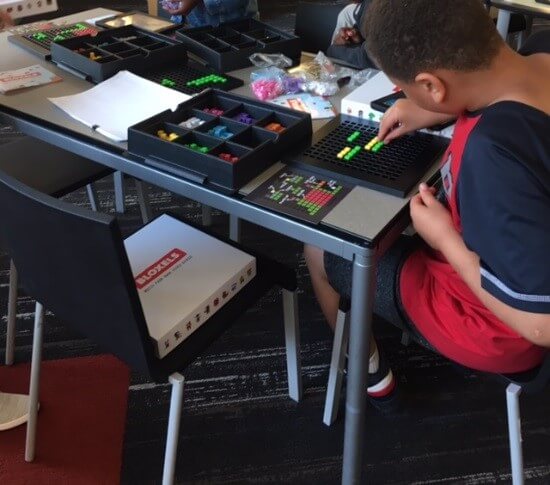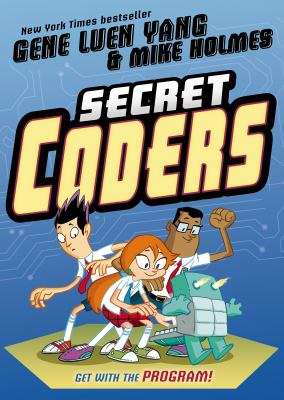One look around the children’s room of the Library and you may be inspired by all the different types of learning going on. Children pore over the new Dork Diaries or Pokemon inspired chapter books in one corner, while little ones build a tower from Magnatiles, screaming as it crashes to the ground. But none of those learning experiences garner as much attention from youth in our spaces as computer gaming. The collaborative experience offers our Library users a chance to socialize and contribute to a community both in our physical spaces and in digital spaces. Crowded around our computers, children of all ages find community in games. However, it can be a struggle to understand and encourage game play among children for educators and parents.
At the Library we believe in access for all children to technology, services and resources, and this is a big reason why there may be increased geeking out happening in our spaces around tech. With any media consumption, conversation is key. Librarians are trained to participate in dialog around game play and hope children open up about their interests much like with their favorite book. In a report from the Joan Gaez Cooney Center, 49% of parents reported they believed learning from gaming experiences can lead to “learning that may come in handy at school.” So how do we encourage our eager gamers?

PBS Parents suggests many tips for engaging children through video games. Check out this article, Connecting with Your Child Through Video Games . They also offer handy tip sheets for additional interactions for children as young as preschool age.
Even educators are on board with gaming. Local efforts such as Remake Learning support the use of gaming as a way to learn. The Institute of Play provides some learning outcomes from game based curriculum such as: “Challenge is constant; Children learn by doing; Everyone is a participant; Feedback is immediate and ongoing; and Learning feels like play.” Our new Game Designer Super Science kit is inspired by this thinking. By using the learning tool Bloxels, we teach game creation and the art of storytelling through video games.

The Library also offers print resources for parents and educators interested in gaming and digital media. Much of our work in the Library was guided by the book, Technology and Digital Media in the Early Years. Working together through a book like Coding Games in Scratch by Jon Woodcock is another great way to share gaming.
Many books in our children’s non-fiction collections contain real life stories about computer programmers, game developers and other STEM careers. Grace Hopper: Queen of Computer Code by Laurie Wallmark, Ada Lovelace, Poet of Science: The First Computer Programmer by Diane Stanley and Hidden Figures Young Readers Edition by Margot Lee Shetterley, provide a look into the history of computer programming. Gene Luen Yang’s Secret Coders graphic novel series is a great way to encourage game obsessed kids to take a break with a book. Even kindergarten students can learn to create games with Scratch Jr. books like Coding with Scratch Jr. by Andrienne Matteson.
Your local children’s Librarian engages with young gamers all day so don’t forget that we can be a resource for your family. We are here to help with technology talking tips, app suggestions, coding and computer programming books, and other tools you may need to help your child learn through gaming.


